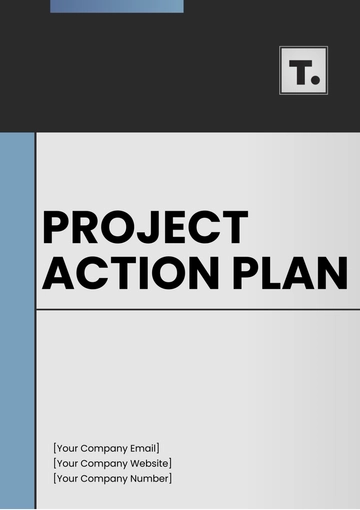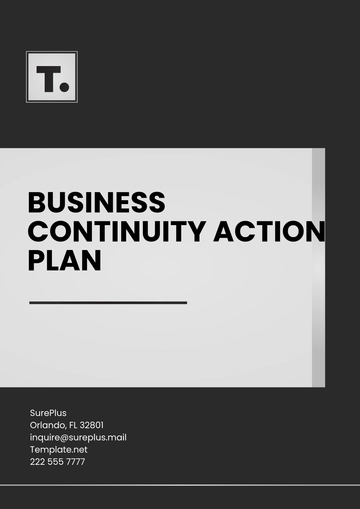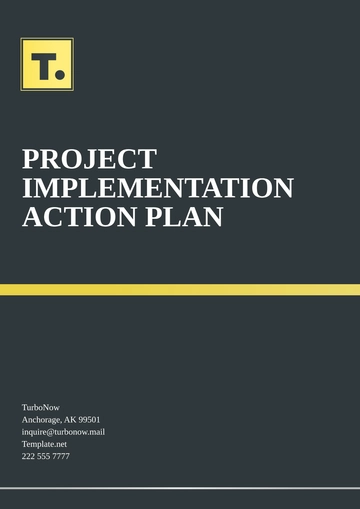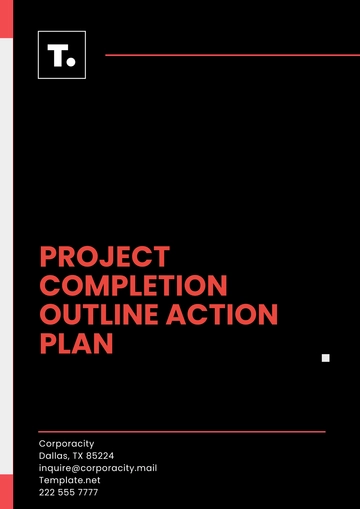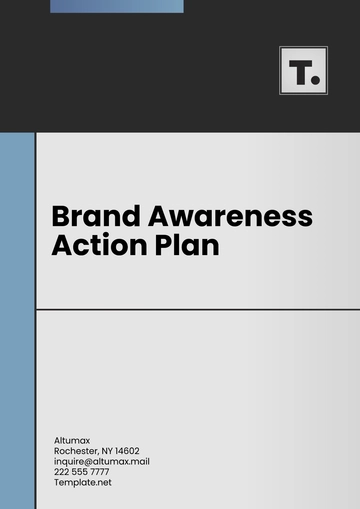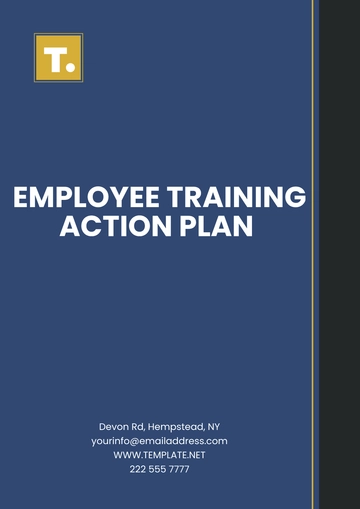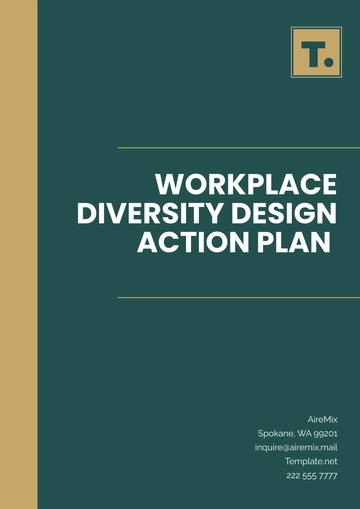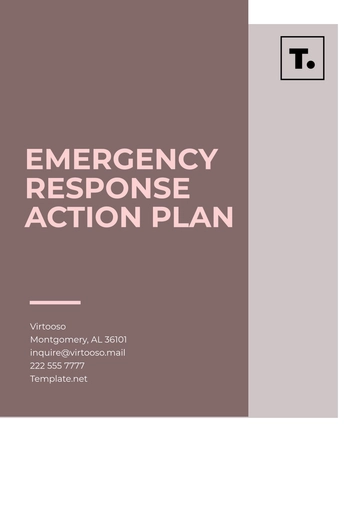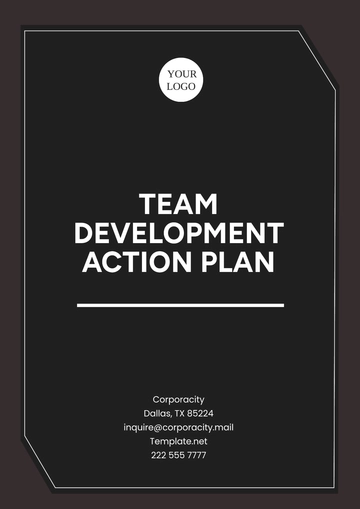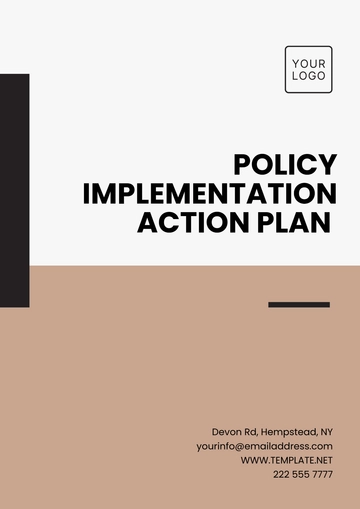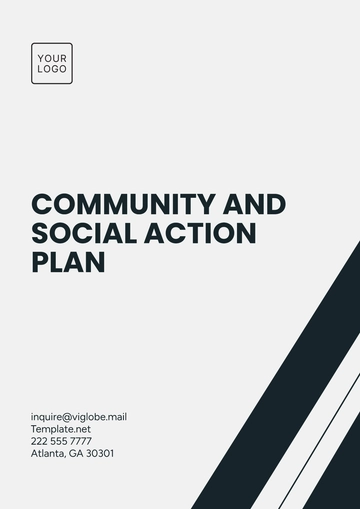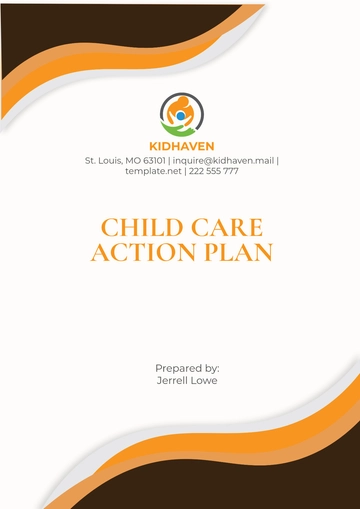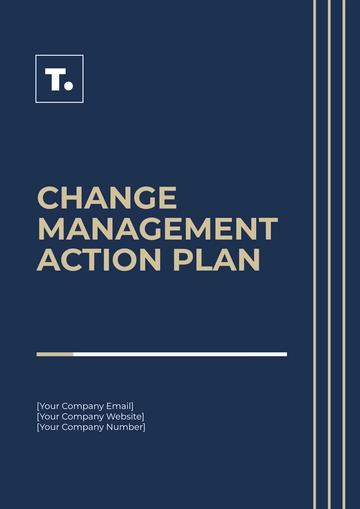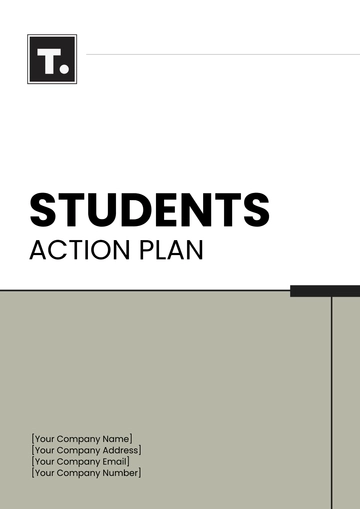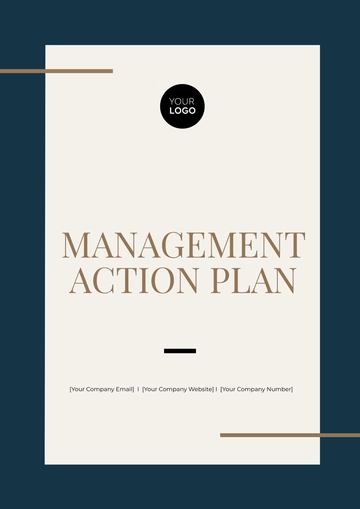Free Hotel Emergency Action Plan
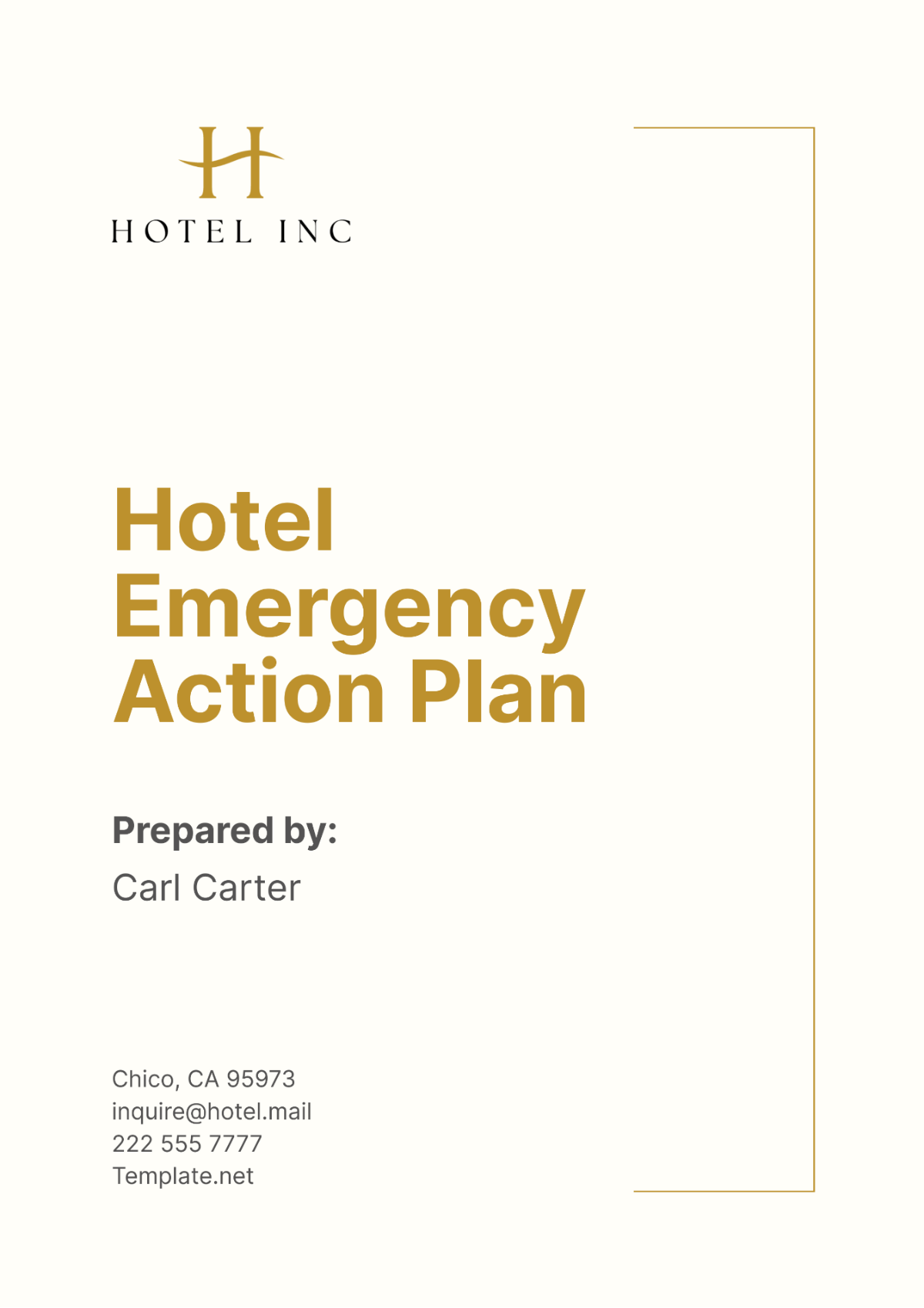
I. Introduction
At [Your Company Name], we prioritize the safety and well-being of our guests and staff. This document is a testament to that commitment, outlining the procedures to follow in various emergency situations.
A. Purpose
Our plan serves several key purposes:
Safety: The foremost purpose is to safeguard all individuals within our hotel premises during an emergency. Measures are in place to minimize harm and ensure swift evacuation if necessary.
Preparedness: We aim to equip our staff with the knowledge and skills needed to handle potential emergencies. Regular training sessions are conducted to familiarize them with the procedures and their execution.
Response: The plan provides clear instructions on how to respond effectively and efficiently during an emergency. This includes communication protocols, roles and responsibilities, and immediate actions to take.
Recovery: The plan outlines the steps necessary for returning to normal operations after an emergency. This includes damage assessment, cleanup operations, and debriefing sessions.
Improvement: We believe in learning from every incident. Our plan is regularly reviewed and updated based on lessons learned from past emergencies and drills.
B. Scope
The scope of our plan is broad:
Emergencies: The plan encompasses a wide range of emergencies, including fires, natural disasters, medical emergencies, and security threats. We strive to be prepared for all possible scenarios.
Locations: The plan applies to all areas within our hotel premises. This includes guest rooms, restaurants, conference rooms, and outdoor areas. Each area has specific procedures based on its unique characteristics.
People: The plan is designed to protect all individuals present in the hotel. This includes guests, staff, contractors, and visitors. Everyone’s safety is our responsibility.
Time: Emergencies can happen at any time. Our plan is in effect 24/7 and applies to emergencies that may occur during any time of the day or night.
C. Target Audience
The plan is intended for several key audiences:
Hotel Staff: All hotel staff, from management to housekeeping, are expected to be familiar with and follow the plan. Their knowledge and preparedness are crucial in handling emergencies.
Guests: While guests are not expected to know the plan in detail, we ensure they are aware of basic procedures such as evacuation routes and assembly points. Their safety is our top priority.
Contractors and Suppliers: Any contractors or suppliers working within our hotel premises are briefed on relevant parts of the plan. Their cooperation is essential in ensuring a safe environment.
Emergency Services: Local emergency services are informed about certain aspects of our plan, such as access points and hazardous materials. Their expertise is invaluable during emergencies.
Regulatory Bodies: We comply with all regulatory requirements and provide access to our plan for compliance checks.
Insurance Companies: Our insurance providers are kept informed about our emergency preparedness as part of their risk assessment. This helps us ensure adequate coverage and quick claim processing.
II. Roles and Responsibilities
In the event of an emergency, it is crucial that everyone involved knows their roles and responsibilities. The following table outlines the specific duties assigned to each role within [Your Company Name]:
Role | Responsibility |
|---|---|
General Manager | Overall coordination of emergency response and communication with authorities. |
Facilities Manager | Manage all facility-related issues including utilities and structural assessments. |
Security Head | Ensure safety and security measures are in place and operational during an emergency. |
Hotel Staff | Assist guests in evacuations and follow designated emergency procedures. |
A. General Manager
The General Manager has a pivotal role in our emergency response:
Coordination: The General Manager is responsible for coordinating the overall emergency response. This involves making key decisions, delegating tasks, and ensuring that all teams are working together effectively to manage the situation.
Communication: The General Manager is the primary point of contact with authorities. They ensure that relevant information is shared promptly and accurately, facilitating a swift and effective response from emergency services.
Leadership: In times of crisis, strong leadership is crucial. The General Manager provides this, guiding the team, maintaining morale, and ensuring that everyone remains calm and focused.
Post-Emergency Review: After the emergency, the General Manager leads a review of the incident to identify lessons learned and areas for improvement. This helps us continuously improve our emergency response procedures.
Plan Updates: Based on the post-emergency review, the General Manager oversees updates to the emergency plan as needed. This ensures that our plan remains current and effective.
B. Facilities Manager
The Facilities Manager plays a key role in managing the physical aspects of the emergency:
Facility Issues: The Facilities Manager handles all facility-related issues during an emergency. This includes assessing damage, coordinating repairs, and ensuring that the building remains safe and functional.
Utilities Management: The Facilities Manager ensures that utilities are functioning properly. If utilities are disrupted, they coordinate with service providers to restore them as quickly as possible.
Structural Assessments: After an emergency, the Facilities Manager conducts structural assessments to ensure the building is safe. This involves inspecting the building for damage and coordinating any necessary repairs.
Recovery Plan: The Facilities Manager develops and implements a recovery plan to restore the facility to normal operations. This involves coordinating cleanup efforts, overseeing repairs, and ensuring that all areas of the hotel are safe and ready for use.
C. Security Head
The Security Head is responsible for safety and security during an emergency:
Safety Measures: The Security Head ensures that all safety measures are in place and operational. This includes fire safety systems, security cameras, and access controls. These measures are crucial for detecting emergencies early and responding effectively.
Security Protocols: During an emergency, the Security Head implements security protocols to protect guests, staff, and property. This may involve securing the premises, coordinating with law enforcement, and managing any security threats.
Evacuation: The Security Head coordinates the evacuation process, ensuring that everyone reaches safety in an orderly manner. They also ensure that all areas of the hotel have been evacuated and that no one is left behind.
Post-Emergency Security: After the emergency, the Security Head ensures the security of the premises while recovery efforts are underway. This involves monitoring the premises, managing access, and addressing any ongoing security concerns.
Security Training: The Security Head is responsible for training staff on security procedures and protocols. This ensures that all staff are prepared to respond effectively in the event of an emergency.
D. Hotel Staff
The Hotel Staff are on the front lines during an emergency:
Guest Assistance: Hotel Staff are responsible for assisting guests during evacuations and ensuring their safety. They guide guests to the nearest exits, help those who need assistance, and ensure that everyone reaches the assembly point safely.
Emergency Procedures: Hotel Staff follow designated emergency procedures, which may vary depending on the nature of the emergency. They are trained to respond effectively to a range of emergency situations.
Communication: Hotel Staff provide guests with updates and instructions during an emergency. They ensure that guests are informed about the situation and know what to do.
First Aid: Some members of the Hotel Staff may be trained in first aid and can provide immediate assistance to guests or staff who are injured. They can provide crucial support until medical professionals arrive.
Post-Emergency Support: After the emergency, Hotel Staff assist in recovery efforts and provide support to guests. This may involve providing information, helping guests with their needs, and ensuring that everyone is comfortable.
Understanding the roles and responsibilities of each team member is crucial in ensuring an effective response to emergencies. Each role has been carefully defined to cover all aspects of emergency management, from initial response to recovery. By clearly defining these roles, we can ensure a coordinated and effective response to any emergency situation.
III. Emergency Type and Procedures
At [Your Company Name], we have identified several types of emergencies that could potentially occur in a hotel setting. For each type of emergency, we have established specific procedures to ensure a swift and effective response. The following table outlines these emergency types and their corresponding procedures:
Emergency Type | Procedures |
|---|---|
Fire | Activate fire alarm, evacuate guests, call 911, use fire extinguisher if trained. |
Medical Emergency | Call 911, provide first aid if certified, and ensure the area is safe. |
Natural Disaster | Follow evacuation protocols, move guests to designated safe areas. |
Power Outage | Activate backup generators, inform guests, and contact utility providers. |
Security Threat | Contact authorities, secure guest rooms, follow lockdown procedures. |
A. Fire Emergency
In the event of a fire, the following steps are taken:
Alarm Activation: The fire alarm system is triggered immediately to alert everyone in the building. This is the first step in our response, ensuring that everyone is aware of the danger and can begin to respond appropriately.
Evacuation: Guests and employees are notified to evacuate the building through the nearest safe exit. This is crucial for ensuring everyone’s safety and preventing injuries.
Emergency Services: Emergency services are called as soon as possible to handle the situation. Their expertise and equipment are essential in controlling and extinguishing the fire.
Fire Extinguisher: If trained and it is safe to do so, staff may use a fire extinguisher to control the fire. This can help prevent the fire from spreading and causing further damage.
Accountability: All guests and employees are accounted for at the designated assembly point to ensure everyone’s safety. This helps us ensure that everyone has evacuated safely and allows us to identify if anyone is missing.
B. Medical Emergency
During a medical emergency, the following procedures are followed:
Emergency Services: Emergency medical services are contacted immediately to provide professional medical assistance. They have the expertise and equipment to handle a wide range of medical emergencies.
First Aid: If a staff member is certified and it is safe to do so, they may provide first aid care. This can help stabilize the individual’s condition until professional medical help arrives.
Safety: The area is secured to ensure the safety of the individual experiencing the medical emergency and others in the vicinity. This helps prevent further injuries and ensures that emergency personnel can do their work unhindered.
Documentation: The incident is documented and the management team is notified. This helps us review our response and make improvements where necessary.
C. Natural Disasters
In the face of natural disasters, we adhere to the following protocols:
Disaster-Specific Protocols: Specific protocols are followed depending on the type of disaster (e.g., earthquake: Drop, Cover, and Hold On). These protocols are based on best practices and advice from emergency management experts.
Evacuation: If necessary, guests are evacuated and moved to higher ground in case of a flood. This helps ensure everyone’s safety during the disaster.
Alerts: We stay updated with alerts and instructions from local authorities to ensure the safety of our guests and staff. This allows us to respond appropriately as the situation evolves.
D. Power Outage
In case of a power outage, the following steps are taken:
Reporting: The outage is reported to the power company and the Facilities Manager is contacted. This helps us understand the cause of the outage and when power might be restored.
Backup Generators: If available, backup generators are activated to provide power. This ensures that essential services can continue to operate during the outage.
Guest Communication: Guests are informed of the situation and provided with necessary amenities (e.g., flashlights). This helps them navigate safely and comfortably during the outage.
E. Security Threat
In response to a security threat, we:
Contact Authorities: Local law enforcement is contacted immediately. Their expertise and resources are crucial in handling the threat.
Hotel Security: Hotel security is notified and lockdown procedures are followed if necessary. This helps protect guests and staff by securing the premises.
Secure Premises: All entry and exit points are secured and surveillance systems are monitored. This helps us identify any potential threats and respond appropriately.
It is essential to be aware of the various emergency situations and their respective protocols to guarantee the safety and security of our guests and employees. Each procedure has been carefully developed to address the unique challenges posed by each type of emergency. By adhering to these procedures, we can efficiently handle crises and reduce their effects.
IV. Evacuation Plan
In the event of an emergency at [Your Company Name], it is crucial that all guests and staff can evacuate the building quickly and safely. To facilitate this, we have developed a detailed evacuation plan. The following table outlines the primary and secondary evacuation routes and assembly points for each floor:
Floor | Primary Evacuation Route | Secondary Evacuation Route | Assembly Point |
|---|---|---|---|
1st Floor | Main Lobby Exit | Emergency Exit A | Parking Lot A |
2nd Floor | Stairwell B | Stairwell C | Parking Lot B |
3rd Floor | Stairwell C | Stairwell D | Parking Lot C |
The evacuation plan is designed to ensure that everyone can exit the building safely, regardless of where they are when an emergency occurs. Each floor has a primary and secondary evacuation route, providing alternatives in case one route is blocked or unsafe. Once outside the building, everyone is directed to an assembly point where they can be accounted for and kept safe until the emergency is over.
The designated assembly points are crucial for ensuring everyone is accounted for after an evacuation. They provide a location where everyone can gather, away from the building and any potential hazards. This allows us to quickly identify if anyone is missing and ensure that everyone is safe.
Regular drills and training are conducted to familiarize with the evacuation routes and procedures. This helps ensure that everyone knows what to do in an emergency, further enhancing the effectiveness of our evacuation plan. It’s not just about having a plan - it’s about making sure everyone knows the plan and can follow it when it matters most.
V. Post-Emergency Procedures
After an emergency at [Your Company Name], it is crucial to follow a set of procedures to ensure the well-being of all individuals involved, document the incident, learn from the experience, and improve our preparedness for future emergencies.
A. Medical Attention and Support
Immediate Care: The first step after an emergency is to ensure that all affected individuals receive necessary medical attention. This could involve calling for professional medical help, providing first aid, or transporting individuals to medical facilities.
Ongoing Support: Beyond immediate medical care, we also provide ongoing support to those affected. This could include counseling services, assistance with insurance claims, or other forms of support depending on the nature of the emergency and the needs of the individuals involved.
B. Incident Documentation
Immediate Documentation: As soon as it is safe to do so, the incident is thoroughly documented. This includes details of what happened, who was involved, what actions were taken, and what the outcomes were.
Insurance Reporting: The incident is also reported to our insurance provider as required. Detailed and accurate documentation can help facilitate any insurance claims that may arise from the incident.
C. Response Assessment
Review of Actions: We conduct a detailed review of our response to the emergency. This involves assessing the effectiveness of our actions, identifying what worked well and what didn’t, and understanding why.
Stakeholder Feedback: We also seek feedback from those involved in the incident, including staff, guests, emergency services, and others. Their perspectives can provide valuable insights into how we can improve our response.
VI. Training and Drills
At [Your Company Name], we believe that regular training sessions and emergency drills are crucial to the effective implementation of our Emergency Action Plan. These activities ensure that all staff members are familiar with the procedures outlined in the plan and are prepared to respond appropriately in the event of an emergency.
A. Regular Training Sessions
Purpose: The primary purpose of our regular training sessions is to ensure that all staff members understand the procedures outlined in our Emergency Action Plan. This includes understanding their individual roles and responsibilities, as well as the overall structure and goals of the plan.
Content: The training sessions cover a wide range of topics, including emergency recognition, response procedures, evacuation protocols, use of emergency equipment, and post-emergency procedures. This comprehensive approach ensures that staff are prepared for a variety of emergency situations.
Frequency: Training sessions are conducted at least once every six months. This frequency ensures that all staff members receive regular refreshers and that new staff are trained promptly.
Evaluation: After each training session, staff members are evaluated to ensure they have understood and can apply the information presented. This helps us identify any areas that may need further clarification or emphasis in future training sessions.
Continuous Improvement: Feedback from these evaluations is used to continuously improve our training sessions, ensuring they remain effective and relevant.
B. Emergency Drills
Purpose: Emergency drills provide staff with practical experience in implementing the procedures outlined in our Emergency Action Plan. They help staff understand what to expect in an emergency and how to respond effectively.
Scenarios: Each drill is based on a specific emergency scenario, such as a fire, medical emergency, natural disaster, power outage, or security threat. This allows staff to practice responding to a variety of situations.
Frequency: Like our training sessions, emergency drills are conducted at least once every six months. This ensures that staff have regular opportunities to practice their response skills.
Evaluation: After each drill, we conduct a debriefing session to evaluate our performance. This allows us to identify any issues or areas for improvement.
Continuous Improvement: The insights gained from these evaluations are used to continuously improve our Emergency Action Plan and our training and drill procedures.
VII. Emergency Contact Information
In the event of an emergency at [Your Company Name], it is crucial to have quick and easy access to the contact information of key personnel and local emergency services. The following table provides a comprehensive list of these contacts:
Contact | Phone Number | |
|---|---|---|
Hotel Manager | 333 555 9999 | manager@email.com |
Security Team Lead | ||
Maintenance Supervisor | ||
Local Fire Department | ||
Local Police Department |
A. Hotel Manager
The Hotel Manager is responsible for the overall coordination of emergency response and communication with authorities. They play a pivotal role in managing the situation, making key decisions, and ensuring that all teams are working together effectively.
B. Security Team Lead
The Security Team Lead is responsible for ensuring safety and security measures are in place and operational during an emergency. Their contact information will be crucial for immediate response and coordination of security measures.
C. Maintenance Supervisor
The Maintenance Supervisor manages all facility-related issues including utilities and structural assessments during an emergency. Quick access to their contact information can expedite the process of addressing and resolving facility-related issues.
D. Local Fire Department
The Local Fire Department is one of the first responders in case of a fire emergency. Having their contact information readily available ensures a swift response in controlling and extinguishing fires.
E. Local Police Department
The Local Police Department plays a crucial role in handling security threats and maintaining law and order during an emergency. Their immediate involvement can help manage the situation effectively and ensure the safety of all guests and staff.
Having these contact details at hand not only facilitates quick communication and response during emergencies but also ensures that the right personnel are alerted at the right time. This can significantly improve the efficiency of our emergency response, minimize potential damage, and most importantly, ensure the safety and well-being of our guests and staff.
VIII. Plan Review and Updates
At [Your Company Name], we understand that our plan is a living document that needs to be regularly reviewed and updated to remain effective. This ensures that our plan reflects current best practices, complies with regulatory changes, and addresses any new risks or challenges that may have emerged.
A. Regular Review
Annual Review: Our Emergency Action Plan is reviewed at least once a year. This regular review allows us to assess the effectiveness of the plan, consider any changes in our operations or environment, and incorporate any new best practices or regulatory requirements.
Post-Incident Review: In addition to the annual review, the plan is also reviewed following any emergency incident. This allows us to learn from the incident, assess our response, and make any necessary adjustments to the plan.
Review Process: The review process involves a thorough examination of the plan, consultation with key stakeholders, and, where necessary, input from external experts. This ensures that our review is comprehensive and takes into account a wide range of perspectives and expertise.
Review Outcomes: The outcomes of the review are documented, including any identified issues, proposed changes, and actions taken. This provides a record of our review process and helps us track our progress over time.
Approval: Any significant changes to the plan are approved by senior management before they are implemented. This ensures that our plan continues to align with our overall strategic objectives and risk management approach.
B. Plan Updates
Update Process: If the review process identifies a need for changes to the plan, these updates are made as soon as possible. This ensures that our plan remains current and effective.
Communication of Updates: Any updates to the plan are communicated to all staff members. This ensures that everyone is aware of the changes and understands any new procedures or responsibilities.
Training: If the updates involve significant changes to procedures or responsibilities, additional training is provided to staff. This ensures that everyone is able to implement the updated plan effectively.
Posting of Updates: The updated plan is posted in common areas throughout the hotel. This ensures that the information is easily accessible to all staff and guests.
Record of Updates: A record is kept of all updates to the plan, including the date of the update, the changes made, and the reason for the changes. This provides a history of our plan and helps us track our continuous improvement efforts.
- 100% Customizable, free editor
- Access 1 Million+ Templates, photo’s & graphics
- Download or share as a template
- Click and replace photos, graphics, text, backgrounds
- Resize, crop, AI write & more
- Access advanced editor
Safeguard guests and staff with the Hotel Emergency Action Plan Template offered by Template.net! This editable and versatile template provides a framework for implementing emergency procedures. With the AI Editor Tool, you can efficiently develop a tailored emergency action plan. The template is customizable, allowing adaptation to your unique needs!
